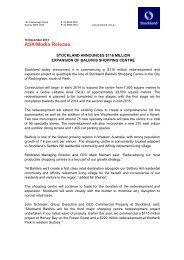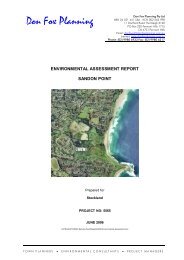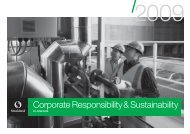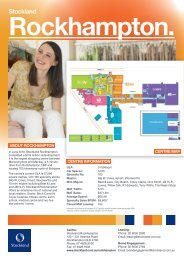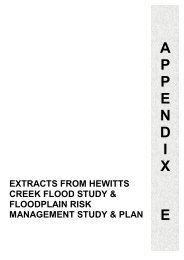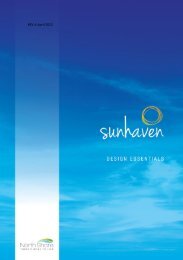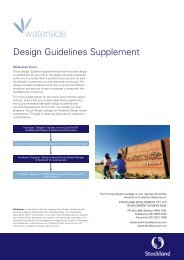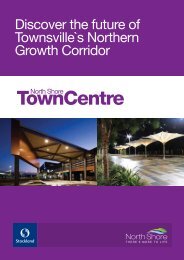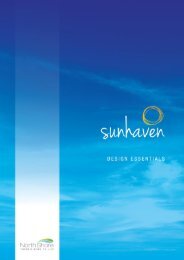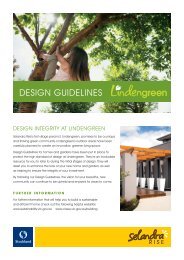Download PDF - Stockland
Download PDF - Stockland
Download PDF - Stockland
You also want an ePaper? Increase the reach of your titles
YUMPU automatically turns print PDFs into web optimized ePapers that Google loves.
Retirement Living<br />
Sustainability Policy<br />
Retirement Living, formerly part of the<br />
Residential business and covered by the<br />
Residential sustainability policy, became<br />
a separate business from 1 July 2009.<br />
Following the elevation of Retirement<br />
Living to a stand-alone business<br />
within the organisation, a review<br />
identified the need to develop an<br />
aligned but tailored approach to<br />
sustainability strategy and policy<br />
in Retirement Living.<br />
A cross-functional group of internal<br />
Retirement Living stakeholders<br />
participated in a sustainability strategy<br />
workshop in October 2009. The<br />
group included representatives from<br />
Sustainability, Marketing, Sales,<br />
Operations, Development and Design.<br />
The workshop resulted in agreement<br />
on the four priority areas for Retirement<br />
Living, which were approved by the<br />
Retirement Living Leadership Team<br />
and the CR&S Board Committee in<br />
February 2010.<br />
The four sustainability priority areas are:<br />
• Community development –<br />
Create and enable healthy, vibrant<br />
communities that over 65s want to<br />
be a part of,<br />
• Ageing population – Be a positive<br />
contributor to the challenges<br />
presented by an ageing population<br />
and leverage this for our business,<br />
• Energy and climate change –<br />
Improve energy efficiency, reduce<br />
costs for our business and residents,<br />
and manage climate change impacts,<br />
• Natural resources – water and<br />
biodiversity – Manage our impact<br />
on natural resources and reduce<br />
costs for our business and residents.<br />
These areas form the focus of the<br />
Retirement Living sustainability policy,<br />
which requires every project to deliver<br />
a minimum consistent performance<br />
for sustainability.<br />
The policy also contains ‘Retirement<br />
Living Sustainability Essentials’. Examples<br />
of essential initiatives include access to<br />
public transport, reductions in potable<br />
water use and climate change risk review.<br />
The essentials apply to new projects from<br />
acquisition through to project completion.<br />
They also apply to existing projects for any<br />
new stages and for ongoing management.<br />
Retirement Living sustainability policy<br />
AGEING POPULATION<br />
Leverage critical mass in<br />
the provision of appropriate<br />
affordable, vibrant and healthy<br />
accommodation and service<br />
ENERGY AND<br />
CLIMATE CHANGE<br />
One energy management<br />
approach and our current and<br />
future climate change impact<br />
OUR PRIORITIES<br />
Retirement<br />
Living<br />
Sustainability<br />
Policy<br />
COMMUNITY<br />
DEVELOPMENT<br />
The soft and hard<br />
infrastructure that create a<br />
sustainable community<br />
NATURAL RESOURCES<br />
– WATER AND BIODIVERSITY<br />
Our water management<br />
approach and our impact<br />
on biological diversity<br />
through developments<br />
<strong>Stockland</strong> Corporate Responsibility & Sustainability Report June 2010<br />
19



